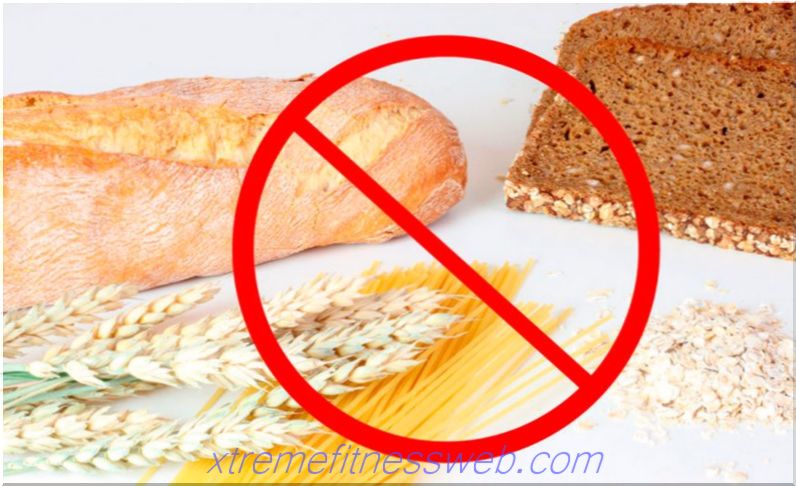- What is fiber?
- Daily fiber requirement
- Fiber - synthesized or vegetable?
- Why is modern man deficient in fiber?
- What foods contain the most fiber?
- Proper fiber intake
- Fiber Tables
- Conclusion

In order not to experience digestive problems, a person needs to consume enough fiber daily. Providing a daily intake allows the inclusion of fiber-rich foods in the diet.
Content
- 1 What is fiber "> 2 Daily fiber requirement
- 3 Fiber - synthesized or plant?
- 4 Why is a modern person deficient in fiber?
- 5 Which foods contain the most fiber?
- 6 Proper fiber intake
- 7 Fiber Tables
- 8 Conclusion
What is fiber?
This is a special type of carbohydrate called dietary fiber, which is not digested in the human body. They, entering the stomach, are transformed into sugar molecules, do not decompose, are excreted from the body.
Fiber normalizes blood sugar, which has a direct effect on feelings of fullness and hunger. Thanks to these special carbohydrates, food moves through the digestive tract (gastrointestinal tract). Deficiency of dietary fiber in the body provokes constipation, metabolic disturbance.
Daily fiber requirement
Adults and children, according to nutritionists, daily require about 20-30 g of dietary fiber. The diet of an average person, as a rule, does not include products that are able to cover this norm. Usually people at any age consume a maximum of 15 grams of fiber per day.
Exercise increases the need for dietary fiber. For athletes involved in strength training, the daily rate rises to 38-40 g. This is due to an increase in the volume and calorie intake.
Fiber - synthesized or vegetable?
Fiber can be taken in the form of tablets and sports supplements. The synthesized analogues are inferior to plant sources of dietary fiber. In 150-200 g a jar of fiber accounts for 5-10%, that is, two daily allowances.
In 100 g of additives, the basis of which are seeds of flax and milk thistle, shells of grains of millet, oilcake, 5-15 g of dietary fiber are necessary. As part of the product, they are included as carbohydrate, and, therefore, a teaspoon contains 1-2 g of fiber.
Why is modern man deficient in fiber?
The reason lies in the diet, which consists of sweets, snacks, products from refined flour, white rice for garnish, packaged juices and other products that are practically devoid of vitamins and fiber. It is impossible to fill this deficiency with complex vitamins and synthesized fiber.
If there are no vegetables on the menu, and fruits are consumed in candied or other forms with fast carbohydrates, this negatively affects health, increases the risk of developing diabetes, diseases of the cardiovascular system, and obesity. Avoiding this allows the use of natural food, which forms a healthy and balanced diet.
What foods contain the most fiber?
Legumes, Turkish and ordinary peas, whole grain wheat flour, bran and avocados contain about 10-15% of dietary fiber from its own dry weight. A small portion of any of these products allows you to get about 5-10 g of this carbohydrate.
Fiber is ingested from lettuce, white and cauliflower, unpeeled potatoes, sweet potato, corn, broccoli, pumpkin, carrots, green beans, asparagus, pasta from whole grains of wheat, pears, bananas, apples, strawberries, blueberries, oranges, raisins, mangoes, nuts.

Proper fiber intake
An excess of fiber also has its negative consequences. Eating large amounts of dietary fiber can cause bloating. This special carbohydrate reduces the absorption of nutrients that are necessary for athletes who follow a diet to gain muscle mass.
The daily rate is best used in several stages:
- 5 g at breakfast - porridge or granola;
- 10-15 g for lunch - legumes or brown rice, fruits;
- 10 to 15 g for dinner - avocado, green vegetables.
The menu may vary. The main thing is to comply with the recommended norm.
Fiber Tables
Tabular data are based on “ideal indicators” and cannot be perceived as a source of 100% true information. The amount of dietary fiber depends on the method of growing and further preparation used. Cooking softens fiber, which makes it easier for the body to digest and absorb this carbohydrate.
Not all tables are reliable. In many, grapefruit is at the top of the list of fiber sources. One hundred grams of the fetus contains a maximum of 1.5 g. It is better to focus on which foods have more fiber than just the numbers.
| Products, 100 g dry | Cellulose |
|---|---|
| Bran | 40-45 g |
| Flax-seed | 25-30 g |
| Dried mushrooms | 20-25 g |
| Dried fruits | 12-15 g |
| Legumes (lentils, beans, chickpeas, etc.) | 9-13 g |
| Whole wheat bread | 8-9 g |
| Various berries (blueberries, lingonberries, etc.) | 5-8 g |
| Avocado | 7 g |
| Sweet fruits (peaches, oranges, strawberries, etc.) | 2-4 g |

Conclusion
Fiber is essential for maintaining normal digestive function. It cannot be fully replaced by synthesized analogs, but must enter the body along with natural food.







